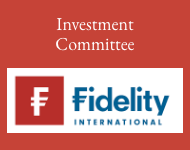Alex Holroyd-Jones, Multi Asset Portfolio Manager, discusses the evolving landscape in Europe, as investors seek to diversify away from the US and into international markets.
In recent years, European equities have played second fiddle to their American counterparts. Wall Street’s megacap technology firms have hoovered up investor capital, propelling US stock indices to ever loftier heights. Meanwhile, the eurozone, weighed down by an energy shock, sluggish growth and a lack of technology leadership, has struggled to inspire similar investor enthusiasm. But with the eurozone’s economic cycle turning and monetary conditions easing, the next 12 to 24 months may be one for European risk assets to shine.
The cyclical and fiscal upturn
A confluence of macroeconomic forces is building a more constructive case for European equities. Chief among them is the region’s cyclical upturn. The eurozone is showing signs of recovery after weak growth for much of the last two years. Business sentiment, measured by PMIs, is climbing, led by improvement in manufacturing. Consumer confidence is also recovering, buoyed by real wage growth as inflation cools and employment remains resilient. A new credit cycle has emerged, with credit growth regaining after a period of contraction. Europe’s long-idling growth engine is finally gaining traction.
This rebound is being underwritten by monetary policy. The European Central Bank (ECB), having fought inflation with an unprecedented tightening campaign, is now well advanced in its easing cycle. Given Europe’s typically shorter transmission lag between monetary action and economic response, relative to the US, the recovery may gain momentum as the stimulative impact of recent rate cuts filters through, all else being equal.
Fiscal dynamics are also turning more supportive. After years of austerity and German-led frugality, governments across the eurozone are adopting a more expansive stance. Germany is driving fiscal stimulus with a historic package from the new government, but France, Italy and Spain are all boosting public investment, particularly in defence, infrastructure and green transition initiatives. The result is a powerful fiscal-monetary alignment that is already supporting economic growth and asset prices.
A powerful shift in global capital flows
For the past decade, the US has been the default destination for global investors, underpinned by tech dominance, economic exceptionalism and a strong dollar. That concentration has reached historic extremes. US equities now comprise over c.70% of global equity indices, with investor allocations similarly lopsided. Valuations reflect this exuberance: the S&P 500 trades at a rich premium to both its historical average and global peers.
By contrast, European equities remain comparatively cheap. The Euro Stoxx 50 trades at a substantial discount to US benchmarks on forward earnings (15x vs. 21x) and price-to-book metrics. This valuation gap is not merely a reflection of inferior fundamentals—it also mirrors years of under-allocation, including by European investors. Should the US economy continue to cool, as we expect, or if enthusiasm for AI-driven tech fades due to Chinese advances, capital rotation toward underloved and underpriced European assets could accelerate.
Implications for investors
Naturally risks remain. The continent’s reliance on external demand, especially from China, leaves it vulnerable to US trade policies, while as a net importer of oil, the risk of an oil price shock from Middle East conflict could reawaken fears of inflation and weigh on demand.
As concerns continue around US fiscal policy, tariffs and growth forecasts, investors are looking to diversify their portfolios into Europe and emerging markets, both of which have outperformed this year. Emerging markets have seen improved fundamentals and clear ‘winners’ have emerged in light of geopolitical events, notably in Latin America,
For investors willing to look beyond short-term noise, Europe offers the potential alignment of improving macro fundamentals, supportive policy, attractive valuations and the prospect of renewed capital inflows away from US assets. The eurozone may not displace the US as the epicentre of global equity markets, but it’s risk assets are well positioned to outperform over the medium term as global capital rebalances.
Main image: christian-lue-8Yw6tsB8tnc-unsplash

































